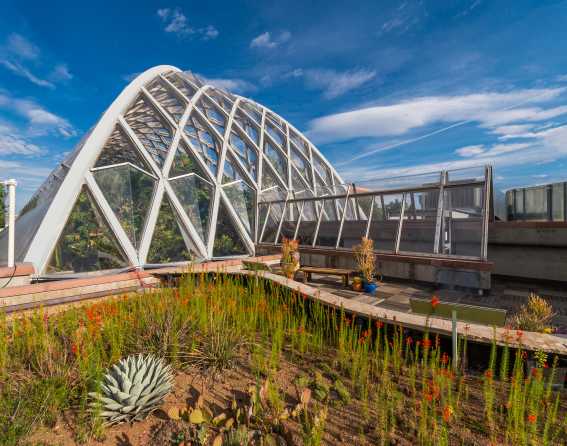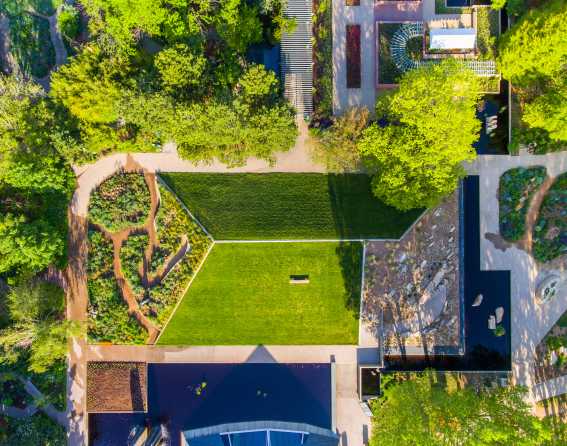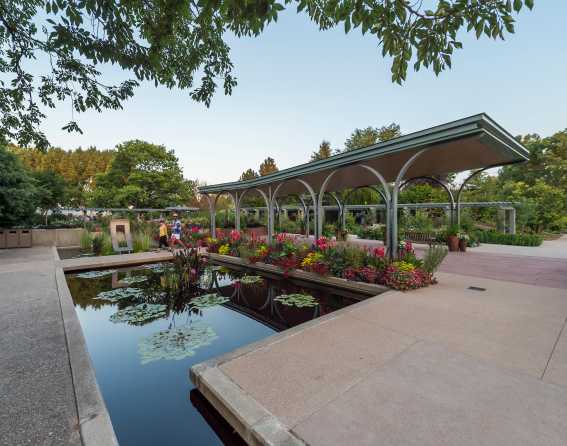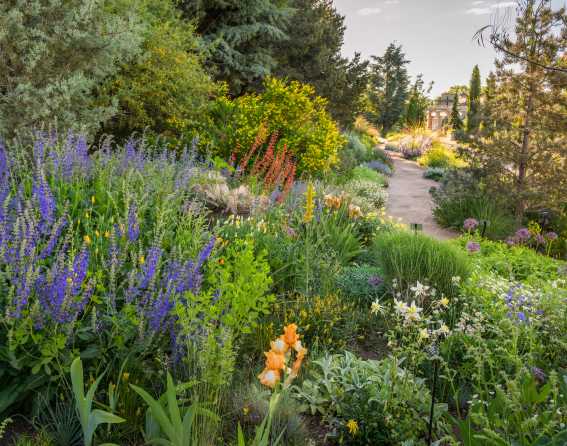When it comes to sustainable horticulture, Denver Botanic Gardens is leading by example.
Take green roofs, which ease the urban heat island, provide wildlife habitat and offer other environmental benefits. There are two at the York Street location: a display roof atop the Boettcher Building and Mordecai Children’s Garden on the parking structure across the street.
The former is “a wonderful display garden that our guests can very easily come to see,” says Suzi Latona, director of operations. The 1.2-acre Mordecai Children’s Garden is the largest green roof in Colorado, according to Tryba Architects, the firm behind the project’s design.
“It’s a learning opportunity for the public to be able to come and see what it looks like and see how to do it,” continues Latona. “The one that we have on Boettcher is very visible and very visual to see exactly where we have irrigation lines run and how that all works.”
That’s especially important when considering the fact that all new commercial buildings larger than 25,000 square feet in Denver are now required to have a green roof, or else a cool roof that doesn’t absorb as much sunlight as the status quo. Beyond the educational aspect, she adds, “It does help with the insulation of the building.”
The Mordecai Children’s Garden is more elaborate and not necessarily a model for developers, but it still serves a purpose.
“More so than being a display garden, because it’s not really the kind of green roof that you would expect to see for other commercial or residential opportunities,” explains Latona, noting that it still offers the benefit of stormwater filtration and refuses runoff. “Everything that hits the green roof over there goes down into our Pipsqueak Pond. The filtration is very important for us over in that garden.”
Water is a recurring theme: The second main prong of the Gardens’ sustainability mission is water conservation, and once again, the York Street site walks the walk.
“We have one major waterway that runs through the Botanic Gardens, and that’s the primary place that we have been focusing our attention for the last four years,” says Latona. “Four years ago, we began realigning our Japanese garden stream, and at the end of the year, we were able to track over a million gallons in water saved over a 12-month period.”
Subsequent efforts, including leak repairs and spigot upgrades, “added up to another million gallons saved, so 2023 over 2019 numbers is a 2 million gallon water savings.”
Again, education is a focus when it comes to water, with resources both online and at the Gardens themselves. Latona highlights the Roads Water-Smart Garden, with drought-tolerant plants native to Colorado and other semi-arid climates around the world.
“That garden has only expanded and continues to expand,” she says.
And Colorado’s turf replacement program has spurred another educational push.
“Along York Street and Josephine Street, you can see demonstration areas where we have removed huge areas of turf and planted native, water-saving plants in those areas,” she says.
On York, that meant 30 percent less water in 2023, but by 2026, they won’t need to be watered at all.
“Those plants will just live on their own in the Colorado climate,” says Latona.
On the operational side, the Gardens aims for a no-landfill target with glass and aluminum drinkware, compostable plates and flatware, and bottle-filling stations, with a project to double its solar array to 200 kilowatts underway in 2024.
“We’re walking the walk as we talk the talk,” says Latona.
But it ultimately all comes back to educating the outside world about the best practices of sustainable gardening by way of signage, classes and the free Helen Fowler Library at 1085 York St. The Gardens also collaborates with Metropolitan State University of Denver on a water studies program called One World One Water Center.
“Sustainability is one of our core values, but education is definitely the vehicle,” says Jennifer Riley-Chetwynd, the Gardens’ director of marketing and social responsibility. “You know, we can have beautiful gardens here, but if people felt like you can only see that in the Botanic Gardens where professionals are taking care of it, that would be kind of disheartening.”
She adds, “The whole idea is to show what is possible here.”









